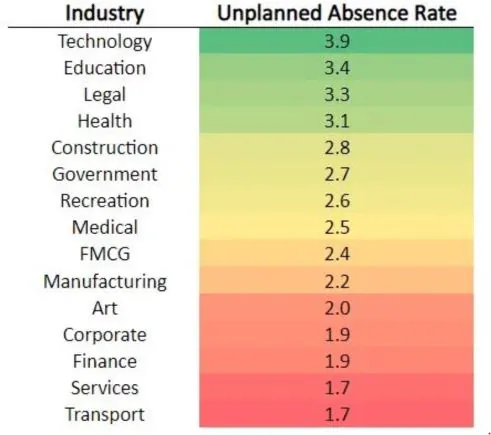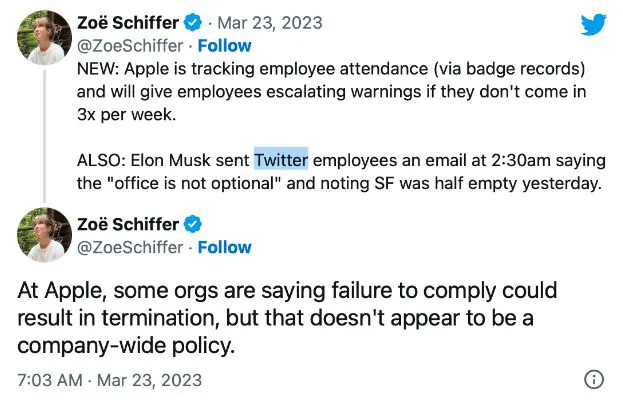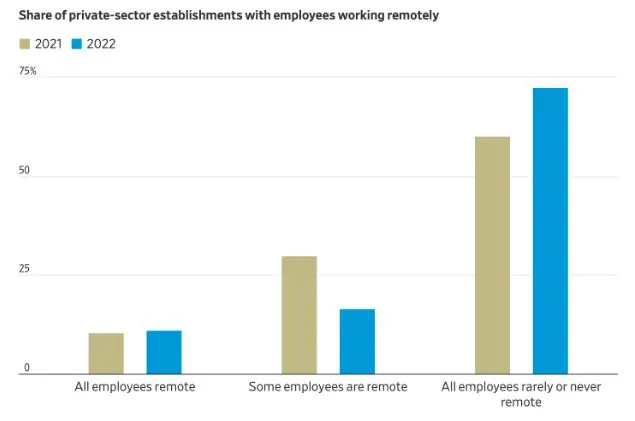One of the reasons I’ve been so focused as a CEO on employee attendance is that I realize how contagious absenteeism is.
When levels of absenteeism begin to rise, it encourages others to do the same, and before you know levels are really high and then it’s a very difficult trend to reverse.
Managing employee attendance is mundane, but getting it right is important in the success of any organization. The thing is, attendance is a measure of an employee’s reliability as well as their commitment to their job, and it directly impacts productivity, profitability, and the overall success of a company.
In the United States, there are many laws and regulations surrounding employee attendance, and employers must comply with these regulations to avoid legal issues. In this article, I will explore the importance of employee attendance, laws and regulations, and statistics surrounding employee attendance in the US.
Importance of Employee Attendance
Employee absenteeism can have a significant impact on an organization, both in terms of productivity and financial performance. It can lead to decreased productivity, increased costs, decreased morale, a negative impact on company culture, and a negative impact on customer service. One of the key issues with absenteeism is that it’s somewhat contagious in the sense that if employees see their colleagues regularly being absent, they’re more likely to do the same. And so, it is important for organizations to prioritize attendance and create policies and practices that encourage reliable attendance among employees. Additionally, employers can create a culture that values and rewards attendance, which can help to reduce employee absenteeism and improve overall performance.
Employee Attendance Laws and Regulations
In the United States, there are many laws and regulations surrounding employee attendance. The Fair Labor Standards Act (FLSA) requires employers to pay employees for all hours worked, including overtime, and sets standards for minimum wage, record-keeping, and child labor. The Family and Medical Leave Act (FMLA) provides eligible employees with up to 12 weeks of unpaid leave per year for defined medical and family reasons. And the Americans with Disabilities Act (ADA) prohibits discrimination against employees with disabilities and requires employers to provide reasonable accommodations to allow them to perform their job duties.
Employers must also comply with state and local laws, which vary widely. For example, some states require employers to provide paid sick leave or vacation time, and some have recently passed laws requiring employers to provide additional benefits or pay for certain types of leave.
Statistics on Employee Attendance in the US
In January 2022, the number of US employees missing work went up a lot – by 5.4%. This was more than expected, as the rates in the previous years were between 2.1 and 3.0%. The main causes for these absences were illness and injury. In March 2023, about 2.67% of older workers (aged 65 and above) who work full-time were also absent because of health reasons.
There are, of course, differences based on industry, occupation, and demographic group. For example, healthcare and social assistance workers had the highest rates of absence due to illness or injury, with an average of 4.2 days missed per year. This is likely due to the high levels of exposure to illness and injury in these fields. On the other hand, workers in the financial activities industry had the lowest rates of absence, with an average of 1.4 days missed per year. The below graph from around the same time but from e-days shows the variation.

There were also significant differences based on occupation according to the Bureau of Labor Statistics. Sales and office workers had the highest rates of absence due to illness or injury, with an average of 3.5 days missed per year. On the other hand, workers in management, business, and financial operations had the lowest rates of absence, with an average of 1.6 days missed per year. I believe that there are a number of factors at play here, but one key one that is often overlooked is job satisfaction. The reality is that if you simply don’t like your job you’re more likely to look for that excuse.
There were also differences based on demographic group with women taking 39% more days absence due to illness or injury than men, 3.2 days vs 2.3 days, and, unsurprisingly, older workers had higher rates of absence, with workers over age 55 missing an average of 4.1 days per year compared to 2.1 days for workers under age 25.
Recent Trends and Covid
Illness related work absences are currently at an all-time annual high with no clear prospects of it easing. For more than three years now, more than a million people each month have been absent due to illness. In June 2022, about 7% of adult Americans had long Covid which affected their productivity and ability to work.
Surprisingly in 2022, workers had the most sickness-related absences of the pandemic, and the highest number since record-keeping began in 1976. In 2022, the average was 1.58 million per month with it peaking in January at 3.6 million, about three times the pre-pandemic number for a typical January.
Parents and caregivers also saw the highest rates of childcare-related absences of the entire pandemic in October 2022 due to the surge as a result of the easing of social distancing measures and vaccination rates.
According to the New York Times over 70% of long Covid patients who filed for worker’s compensation still had symptoms which required medical attention or were unable to work completely for at least six months. In total, the workforce participation has dropped by about 500,000 people because of Covid.
WFH and Attendance
Apple has been continuously trying to force its staff to work from offices at least three days each week. The company has been tracking employee attendance through “badge records” and issuing warnings to those who fail to comply. Many employees have, of course, opposed the company’s plans to force staff to get back into the office, arguing that they had already proven their ability to work effectively remotely over the past two years.

I believe this is a trend we’re going to see continuing in 2024, where companies are requiring staff to increasingly work at the office.
This graph showing 2021 vs 2022 levels of WFH in the Wall Street Journal, sourced from the Labor Department, sums it up pretty well.
The reality is, and I’m getting this sense from many business owners and CEOs, and they’re the ones driving this, that while they had to put up with WFH during the pandemic, they want employees back in the office, but to maintain staff retention it can only be done when the wider market does the same. That seems to be happening.

Having a whole week of 100% remote work is becoming less common. Now, more businesses are leaning towards a hybrid model. This means finding a balance between in-person teamwork and the freedom to work independently. A report from Forbes forecasts that 81% of companies will adopt this hybrid work model in 2024, and Gen Z workers are particularly enthusiastic about it.
Ways to improve employee attendance
There are several ways to improve employee attendance in an organization. Here I discuss some of them. There really is no hard and fast rule that works, much depends on your existing culture.
- Establish a Clear Attendance Policy – a clear attendance policy which is communicated to all employees, and it should include expectations, consequences, and methods for requesting time off or reporting an absence.
- Offer Flexible Work Arrangements – flexible work arrangements, such as telecommuting or flexible schedules, can actually help employees balance their work and personal lives, reducing the likelihood of absences due to personal reasons. It’s part of making work more pleasant.
- Provide Incentives – employers can offer incentives to encourage attendance, such as bonuses or rewards for perfect attendance.
- Create a Positive Work Environment – a positive work environment can increase employee engagement and reduce the likelihood of absences due to job dissatisfaction.
- Monitor Attendance and Provide Feedback – employers should monitor attendance regularly and provide constructive feedback to employees who have poor attendance records and try to identify and address the underlying reasons for the employee’s absences.
Systems you can employ for employee attendance
There are plenty of systems you can use for employee attendance, and that’s assuming you need a system at all. Which one, if any, you use depends on your company culture, type of work, size or organization and several other factors.
- Time and Attendance Software – this can streamline the process of tracking employee attendance and automatically record employee clock-in and clock-out times, calculate hours worked, and generate reports.
- Biometric Time Clocks: fingerprint or facial recognition scanners, can accurately record employee attendance and prevent buddy punching, and they can be integrated cloud software for streamlined tracking and reporting.
- Physical Sign-in Sheets: – old school physical paper and pen can be great ways to manually record employee attendance for the smallest business.
- GPS Tracking – for employees who work remotely or in the field, GPS tracking can be used to monitor their location and attendance.
- Mobile Apps – most time and attendance software also offer mobile apps that allow employees to clock in and out using their smartphones. This method is convenient for employees and can help employers track attendance in real-time.
As mentioned above, when opting for an employee attendance system, it is vital to consider the circumstances, for example, to push employees back into offices from hybrid work models, EY introduced a monitoring system using swipe card entry data to track the office attendance of its UK employees instead of opting for various online models available.
Final Thoughts
Attendance is a measure of an employee’s reliability as well as their commitment to their job, and it directly impacts productivity, profitability, and the overall success of a company, and so it’s important to successfully manage it, and ensuring absenteeism doesn’t rise is damn important because it’s contagious. Staying on top of trends is thus really important for managers, especially the dynamic with WFH. It’s going to be interesting to see how that pans out, but I see 2024 seeing many remote workers back in the office.



